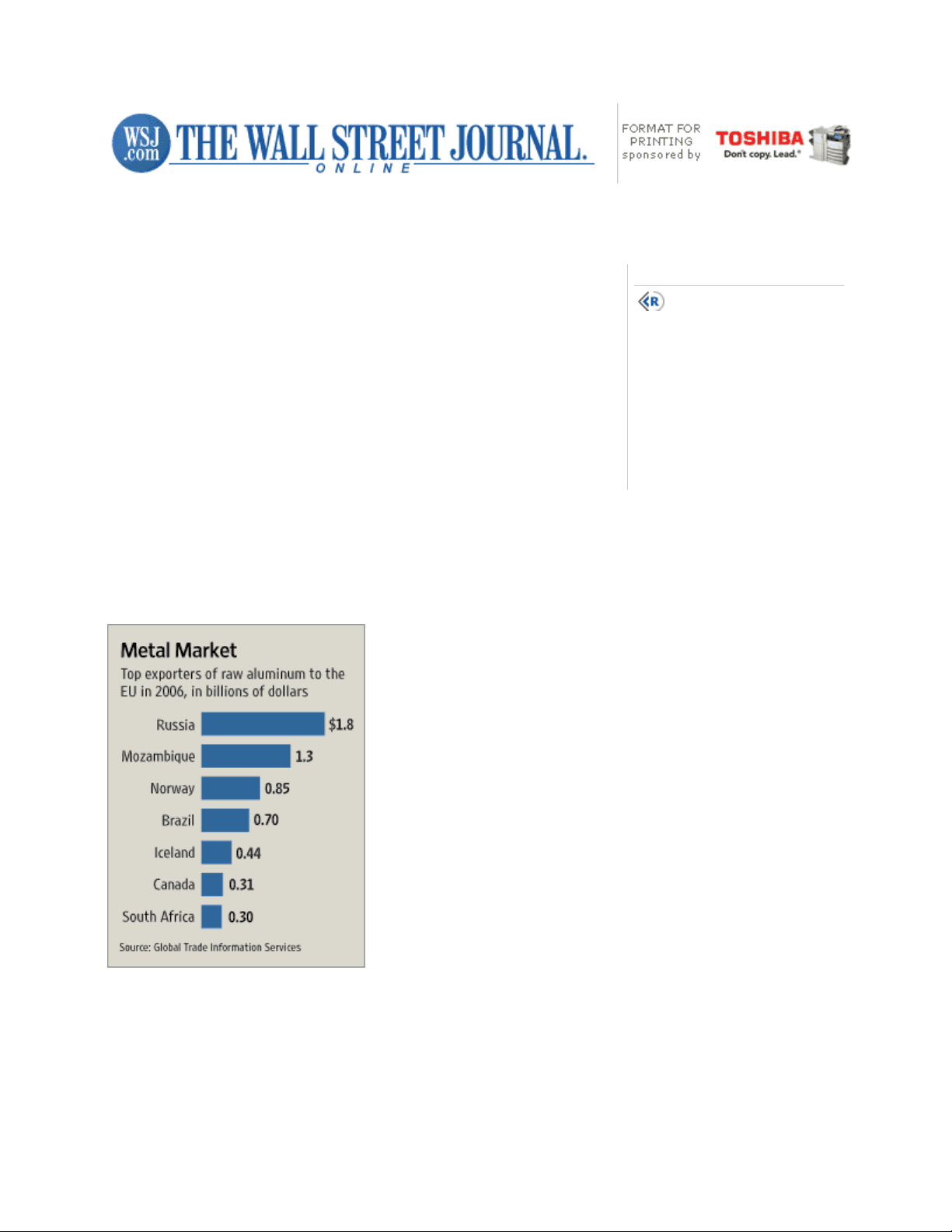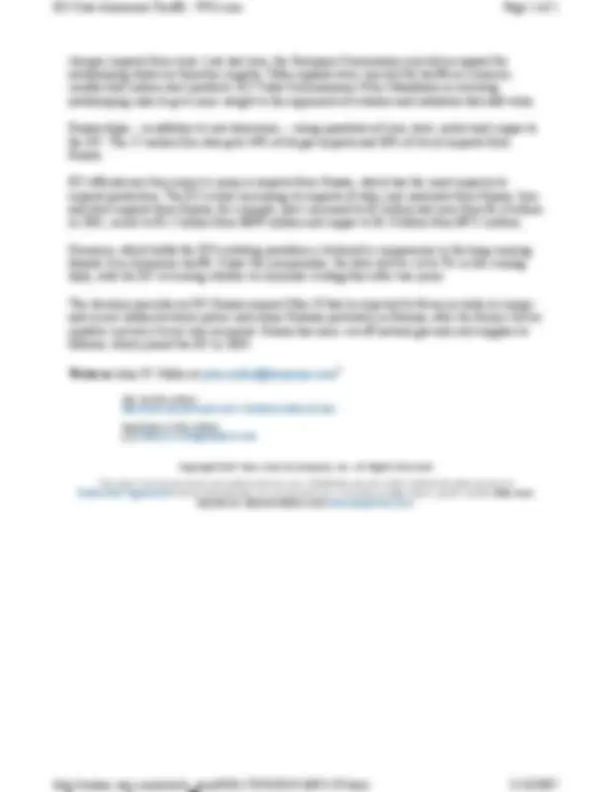



Study with the several resources on Docsity

Earn points by helping other students or get them with a premium plan


Prepare for your exams
Study with the several resources on Docsity

Earn points to download
Earn points by helping other students or get them with a premium plan
Community
Ask the community for help and clear up your study doubts
Discover the best universities in your country according to Docsity users
Free resources
Download our free guides on studying techniques, anxiety management strategies, and thesis advice from Docsity tutors
Material Type: Notes; Class: Intermediate Microeconomics; Subject: Economics; University: University of California-Santa Cruz; Term: Unknown 2007;
Typology: Study notes
1 / 2

This page cannot be seen from the preview
Don't miss anything!


May 8, 2007
Lowering Barrier Is Step in Move For Cheaper Imports By JOHN W. MILLER May 8, 2007; Page A
BRUSSELS -- A European Union decision to cut import tariffs on raw aluminum shows the bloc's increasing focus on securing cheap imports rather than protecting commodity industries, according to EU officials and trade lawyers.
In a vote yesterday, EU ministers cut the import tariffs on aluminum to 3% from 6%, providing a lift to Russian suppliers such as United Company Rusal. Russia is by far the EU's biggest supplier of raw aluminum. After two years, the EU is to review whether to eliminate the tariffs altogether.
The move has been in the works since eight former communist-bloc countries joined the EU in 2004. The new members previously had no tariffs on aluminum imports from Russia, which supplied their producers of car wheels, window frames, airplane parts and other value-added goods. They have lobbied hard to get the 6% barrier removed.
The tariff cut "is part of a wider trend of helping companies that add value and retailers," said Laurent Ruessmann, a lawyer based in Brussels with U.S. law firm Sidley Austin LLP. An EU trade official confirmed that the bloc is increasingly focused on supporting value-added industries.
Like Japan and the U.S., the EU has eliminated almost all tariffs on raw-material imports as its own production has fallen. Aluminum has been an exception. The EU still makes two million tons of raw aluminum a year, and imports 2. million tons.
For years, EU officials say, France successfully fought to keep the tariffs at 6%, on behalf of Pechiney SA, which was bought in 2003 by (^) Alcan Inc. of Canada. (^) Alcoa Inc., based in Pittsburgh, and Norsk Hydro ASA of Norway also have plants in Europe. Besides France, aluminum-producing countries in the EU include Spain, Greece, Slovakia and Germany.
The EU also has been making it harder for companies to secure antidumping tariffs against
DOW JONES REPRINTS This copy is for your personal, non-commercial use only. To order presentation-ready copies for distribution to your colleagues, clients or customers, use the Order Reprints tool at the bottom of any article or visit: www.djreprints.com.
EU Cuts Aluminum Tariffs - WSJ.com Page 1 of 2
http://online.wsj.com/article_print/SB117858281913695159.html 5/23/
cheaper imports from Asia. Late last year, the European Commission rejected an appeal for antidumping duties on furniture imports. Other appeals were rejected for tariffs on ceramics, candles and carbon-steel products. EU Trade Commissioner Peter Mandelson is rewriting antidumping rules to give more weight to the arguments of retailers and industries that add value.
Russia ships -- in addition to raw aluminum -- rising quantities of iron, steel, nickel and copper to the EU. The 27-nation bloc also gets 44% of its gas imports and 30% of its oil imports from Russia.
EU officials say they expect a jump in imports from Russia, which has the most capacity to expand production. The EU is also increasing its imports of other raw materials from Russia. Iron and steel imports from Russia, for example, have increased to $7 billion last year from $1.6 billion in 2001, nickel to $2.1 billion from $899 million and copper to $2.3 billion from $972 million.
Germany, which holds the EU's rotating presidency, brokered a compromise in the long-running dispute over aluminum tariffs. Under the compromise, the duty will be cut to 3% in the coming days, with the EU reviewing whether to eliminate it altogether after two years.
The decision precedes an EU-Russia summit May 18 that is expected to focus on trade in energy and recent clashes between police and ethnic Russian protesters in Estonia, after the former Soviet republic moved a Soviet war memorial. Russia has since cut off natural gas and coal supplies to Estonia, which joined the EU in 2004.
Write to John W. Miller at john.miller@dowjones.com^1
URL for this article: http://online.wsj.com/article/SB117858281913695159.html Hyperlinks in this Article: (1) mailto:john.miller@dowjones.com
Copyright 2007 Dow Jones & Company, Inc. All Rights Reserved This copy is for your personal, non-commercial use only. Distribution and use of this material are governed by our Subscriber Agreement and by copyright law. For non-personal use or to order multiple copies, please contact Dow Jones Reprints at 1-800-843-0008 or visit www.djreprints.com.
EU Cuts Aluminum Tariffs - WSJ.com Page 2 of 2
http://online.wsj.com/article_print/SB117858281913695159.html 5/23/